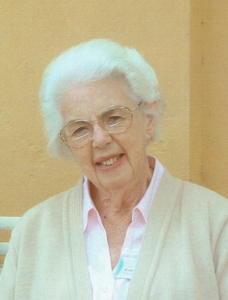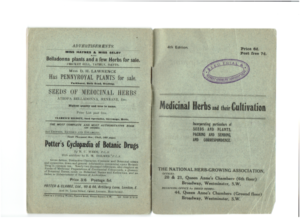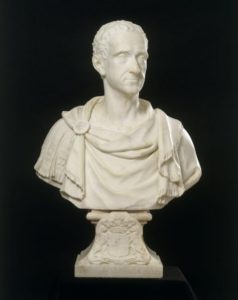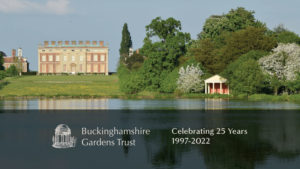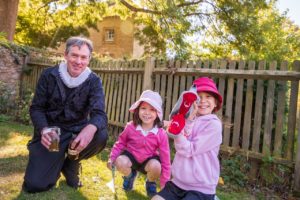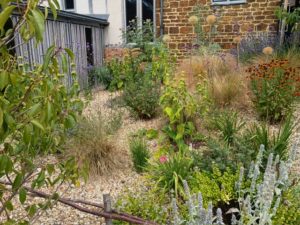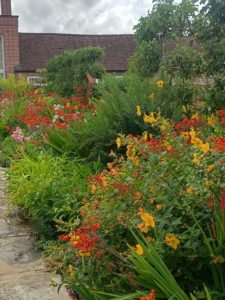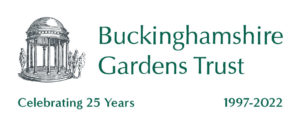 Bucks Gardens Trust 25 years on
Bucks Gardens Trust 25 years on
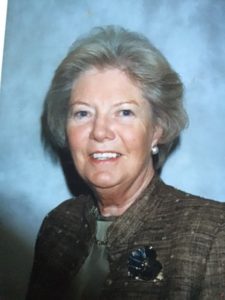 25 years ago I went by chance to a meeting in Northampton about Northamptonshire poets and landscape, especially John Clare who wrote beautiful country poems.
25 years ago I went by chance to a meeting in Northampton about Northamptonshire poets and landscape, especially John Clare who wrote beautiful country poems.
Gilly Drummond, President of Gardens Trust, was there and she pounced on me when she realised I lived in Bucks as she was anxious to get a Gardens Trust going in Bucks and said we were a county rich in gardens and MUST have a Trust.
Consequently, she contacted the powerful local academic garden history characters i.e. Charles Boot and Sarah Rutherford and with my amateur enthusiasm, we arranged a planning meeting in the Buttery near the then undeveloped Dairy at Waddesdon. The launch followed in October 1997 at Hall Barn Beaconsfield with kind permission of Hon Mrs Farncombe, and Mrs Gilly Drummond gave an inspiring talk on the aims and objectives of a Gardens Trust. About 70 people turned up and we had an enjoyable tour of the gardens and felt the BGT had had a successful launch.
The first Newsletter, The Bucks Gardener, was Spring 1998, full of exciting plans for talks at the County Museum, Aylesbury on Saturday afternoons followed by Summer Walks. The Recording Group also attended a training weekend at Madingley Hall so it all go from the beginning.
From then on The Bucks Gardener was produced at least twice a year. The 15 years from 1998 to 2013 saw at least 34 regular Newsletters full of wonderful articles, events, reviews plans, and updates.
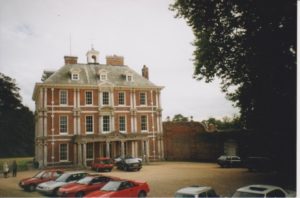
I became treasurer in 2001 and had the challenge of getting charitable status, which was achieved in 2004. I had to sharpen up the accounts and I had help from our farm accountant to set it all up correctly. There were very varied costs from speakers which could be tricky to get right.
Charles requested we did a New Year’s Day flower count and in 1999 I counted 29 which was huge – lots of Hellebores but no count in 2000 due to Foot and Mouth and in 2001 only 20 but there was frost and snow.
Rosemary Jury joined the team as Events Secretary and over the years we had walked all over the county including Hartwell, Cliveden, Eythrope, Stoke Park, Wotton, Central Milton Keynes, Great Linford, Chicheley, Bledlow, Tyringham, Ashridge, Turn End in Haddenham, West Wycombe, Stowe, Ascott, Quarrendon and Rousham (Oxon) to name but a few.
Wotton became especially significant as the landscape was restored and David Gladstone became our Patron.
Some gardens gave cause for concern e.g. Tyringham which was a Health Spa and employed two gardeners to clear the overgrown garden and then put it on the market – fortunately, the eventual owners employed Beth Rothschild to restore the garden, much of it designed by Lutyens.
Winter Talks continued at the Power House, Waddesdon until 2009 when they returned to Aylesbury. Subjects varied from Stowe, Windsor, and Wootton to High Victorian gardens, Lutyens, kitchen gardens, Gertrude Jekyll, and many others. Christmas lunches have also been great occasions and meetings of different members.
We have helped schools, fostering gardening clubs, growing vegetables, and planting a sensory garden at a special school. Schools had little time for their immediate environment but this has become more important since the pandemic.
Looking back we have been involved with many – planning issues from windfarms to HS2, always putting a common-sense view based on local knowledge and history.
However time moves on and I have been less active but am so impressed with the professional attitude of the Research and Recording Project well led by Claire de Carle (now Chair) and grant aid enabling the recording of the planting of Milton Keynes and other sites.
Personally I have met many fascinating people, all so knowledgeable and enthusiastic that I feel privileged to be a member for 25 years of such a successful Trust.
Candy Godber
1
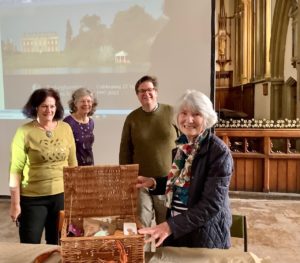
Extract from 1st edition Newsletter, The Bucks Gardener, Spring 1998
Copy courtesy of David Hillier, Council Member
The Bucks Gardener
The story so far
The idea for Buckinghamshire Gardens Trust was first mooted some years ago, and we must thank Gilly Drummond for pushing us over the edge. Nine months on from our initial meeting at The Buttery, Waddesdon Manor, we are already organising our first events, and have begun the in-depth recording of the County’s Historic Parks and Gardens.
Since our launch at Hall Barn things have really begun to happen. We are now up to 80 members and hope to recruit many more in the coming year. We have had several substantial donations, notably from Shire Publications.
We are particularly pleased to have Richard Bisgrove addressing a wide audience, his initial talk opened our eyes to the richness and variety of the County’s gardens, large and small. Michael Walker and Richard Wheeler should throw new light onto the restoration and continuing care of our most famous gardens.
Our intended visit to Cliveden and other gardens in the County should demonstrate still more aspects of the County’s legacy. We hope to finish the year with a Conference at Stowe, bringing together the many different aspects of Conservation Plans and their execution.
We have been warmly welcomed by various of the County’s older conservation groups, and the various Councils. With the arrival of the draft copy of the County’s “Historic Parks and Gardens Register Review”, we have been challenged to record the history of our gardens. In all it has picked up over 450 sites, so there is a lot to do, particularly with the renewed threat to the Green Belt. Being asked to comment on this document, it was felt that we had already begun to make an impression, we have to live up to this.
We hope to help bring colour and delight to the County’s schools, working with them to being growing things into their playing grounds, and widen their links with the greater environment.
The challenge has been laid down. I think, with your help, we can meet it.
Charles Boot, Chair
2
Contents
25 Years On Candy Godber 1
Extract from first newsletter by Charles Boot, the first Chair 2
Contents 3
Dynamic Duo: Claire de Carle, Chair and Michael Thompson, Vice-Chair 4
Planning Update – Jo Mirzoeff 5
International Women’s Day Buckinghamshire Women Gardeners: Alice de Rothschild – Clare Butler 6
International Women’s Day Buckinghamshire Women Gardeners: Kay Sanecki – Claire de Carle 7
International Women’s Day Buckinghamshire Women Gardeners: Margaret Mee – Catherine Youd 8
West Wycombe – a Garden of the Dilettanti – Richard Wheeler 9
Henry Lane & Son of Berkhamsted (1798-1945) – Louise Kell 10
Photograph of Snowdrops in Victoria Thomson’s garden 11
Get Walking: In the Chilterns – Gwen Miles 12
News & Snippets 13
3
Dynamic Duo: Claire de Carle, Chair, and Michael Thompson, Deputy Chair
Claire de Carle – Buckinghamshire Gardens Trust Chair
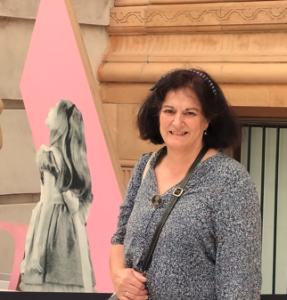 My interest in historic gardens was ignited when I attend a short course at the V&A in 2010, and in 2012 I enrolled on the MA in Garden History course at the University of Buckingham. I also have the RHS Level 2 in Horticulture and a Master Composter certificate!
My interest in historic gardens was ignited when I attend a short course at the V&A in 2010, and in 2012 I enrolled on the MA in Garden History course at the University of Buckingham. I also have the RHS Level 2 in Horticulture and a Master Composter certificate!
I joined the Buckinghamshire Gardens Trust in 2012 and have been involved in our widely acclaimed Research and Recording Project from its inception in 2013. During the last year I have been working with the Historic Environment Record Officer at Bucks Council on the Local Heritage List project, which will see the 100-plus sites the volunteers have completed added to the Local List. The project will now offer different challenges and the hope is that it will be nearing completion by 2023!
I enjoy writing articles for newsletters and have recently started writing shorter posts for the website news and social media. I have had a break from giving talks during lockdown – somehow Zoom ones are not quite the same – but I have already had several requests for live ones in 2022. I have now widened my repertoire and as well as talks on the herbalist Maud Grieve, about whom I also published a book in 2017, I have prepared talks using the vast research resource we have created; subjects include Museum Gardens and Artists and their Gardens.
I first met Mick Thompson in 2012 when I was researching Maud Grieve, and he kindly gave me copies of Kay Sanecki’s research and lent me the archive that she had collected on Maud; these became the basis for my dissertation. Since then, we have worked together on the Humphry Repton project which culminated in a conference at Ashridge in 2018 and of course, we have served on the BGT Council together for the last five years.
At the recent AGM, I became Chair of BGT, and in order to concentrate on my home patch, I felt the time was right to step down from the national Gardens Trust Education and Events committee. I am looking forward to working with my new Vice, Mick, and the rest of our wonderful council. Next year we will be preoccupied with the 25th-anniversary celebrations. I have lots of new ideas for the Trust going forward, by which time Mick will have hopefully completed his PhD!
Claire de Carle
Michael Thompson – Buckinghamshire Gardens Trust Vice-Chair
 Mick graduated from Middlesex Polytechnic (now Middlesex University) in 1980 with a BA in Economics and Geography. He fell into a career in horticulture with the Parks Departments of the City of Westminster and the London Borough of Barnet, where he was a Trainee Parks Officer and Brent as Parks Supervisor. He became Gardens Manager at Ashridge Management College in 1994 and worked there until November 2020. Mick also undertook the role of Archivist at Ashridge. At Ashridge, he was responsible for a team of gardeners maintaining, conserving, and restoring the Grade II* gardens designed by Humphry Repton.
Mick graduated from Middlesex Polytechnic (now Middlesex University) in 1980 with a BA in Economics and Geography. He fell into a career in horticulture with the Parks Departments of the City of Westminster and the London Borough of Barnet, where he was a Trainee Parks Officer and Brent as Parks Supervisor. He became Gardens Manager at Ashridge Management College in 1994 and worked there until November 2020. Mick also undertook the role of Archivist at Ashridge. At Ashridge, he was responsible for a team of gardeners maintaining, conserving, and restoring the Grade II* gardens designed by Humphry Repton.
During his time at Ashridge Mick attended the Architectural Association and was awarded a Diploma in Parks and Gardens Conservation in 1996. A few years later he gained an MA in Garden History at Birkbeck. He is currently doing a part-time research PhD at the University of East Anglia with the working title of ‘Repton and the Architects’. Mick has in the past been involved with a range of groups related to horticulture and garden history including being a Plant Collections co-ordinator for Plant Heritage in Herts and Beds, a member of the Council of the Garden History Society and being involved with the Conservation and Planning group of Hertfordshire Gardens Trust. He was also involved with running a popular Garden History Summer School at Ashridge between 1995 and 2018.
With an interest in garden history, Mick has long been involved with both Hertfordshire and Buckinghamshire Gardens Trusts. He became Secretary of BGT in 2009 and was recently elected as Vice-Chair.
Hailing from Newcastle upon Tyne originally, Mick lives in Tring with Christina, now Treasurer of BGT, and sons Andrew and Alexander.
Mick Thompson
4
Planning Update
First, perhaps I should take this opportunity to reflect on 2021 – an extremely busy year despite the ongoing pressures of Covid which made absolutely no impact on the number of planning applications coming in.
In 2021, I counted that we had dealt with approximately 56 planning applications and, while it is now technically one county, let me show you how it is spread across the different former areas:
| 25 Aylesbury Vale: | 10 Stowe; 3 Waddesdon; 2 Mentmore; 5 Wotton Underwood and others |
| 16 South Bucks: | 4 Langley; 2 Hall Barn; 2 Latimer and others |
| 8 Milton Keynes: | 2 Gayhurst; 2 Ouzel Valley Park, 2 Wavendon and others |
| 7 Wycombe: | 3 Wycombe Abbey; 2 Harleyford; 1 Fawley Court; 1 Cliveden |
Over the course of the year, we were particularly pleased to see that our comments were, mostly, taken into consideration by planning and conservation officers – let’s look at AVDC for example. We objected to proposals for new lighting at the tennis courts at Stowe School and an extension to Lodge Farm at Wotton Underwood and AVDC refused permission in both cases. Proposals to create a deck and high walkway at a property near Chenies and various applications relating to Little Yeat at Wotton Underwood were withdrawn.
We have also been very pleased with the increasing number of pre-application consultations that we have been involved in – most recently at Hall Barn in South Bucks. This sort of engagement is really productive as it allows us to voice any concerns which can, in turn, be addressed before the applicant invests time and money in the formal planning application.
You may remember from previous planning reports that some of last year’s applications were enormous, including large housing developments in the setting of Stowe, relentless applications at Silverstone, 5G telecommunications mast in the setting of the Ouzel Valley Park, HS2 at Hartwell House and the ongoing complexities concerning a new prison at Grendon Underwood and the D&T building at Stowe. Our two planning officers made a number of site visits during the year including Dropmore, Bulstrode, Grendon Underwood, Halton House, Wycombe Abbey and Lodge Farm, Wotton Underwood.
As you read this, you may also be interested to know that, on average, our two planning officers spend between them one and three hours (excluding site visits) on every planning application, depending on how well we know the site and how complex the application is. Some weeks have nothing but other weeks can see four or five applications, so we are certainly kept busy. As you know, we are both volunteers in our work for the Bucks Gardens Trust so we fit our BGT work around our day jobs!
Our input is occasionally resented or challenged – one applicant recently sent the following response to our planning comments: “Particularly perplexing is The Garden Trust’s desire to have influence over the Council with regard to land that simply cannot and does not fall under their remit.”
However, this professional individual must surely be aware that the impact of major alterations at one site is not always confined within the property boundary and we are entitled to comment if a planning application would have a detrimental impact on the setting of a registered park and garden.
As for 2022, it’s already off to a busy start with eight applications, including another two at Little Yeat, a draft consultation for Bletchley, development at Ditton Park, refurbishment of the West Boycott Pavilion at Stowe and new fencing in the setting of Nashdom.
Jo Mirzoeff Planning Advisor BGT
5
Buckinghamshire’s Forgotten Women in Gardening: Alice de Rothschild (1847-1922)
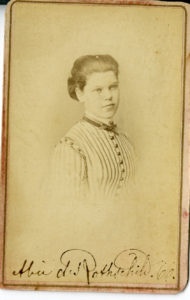
Alice Charlotte von Rothschild was born in Frankfurt on 17 February 1847. She spent her early years in Vienna, and after the death of her mother in 1859 spent time with various European relatives including at Aston Clinton and Mentmore. When her brother Ferdinand’s wife Evelina died in 1866 she assumed the role of hostess at Waddesdon Manor, buying the adjacent Eythrope estate in 1875 – the two properties were connected by a landscaped drive. She had a house built for her there by George Devey, called ‘The Pavilion’, although because her doctor advised her not to sleep in a location so close to the River Thame, she returned to Waddesdon every night.
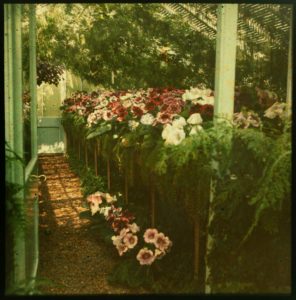
At Eythrope she laid out her 60 acres (her ‘little garden’) as ornamental gardens to rival the opulence of those at Waddesdon: an extensive lawn in front of The Pavilion, studded with flower beds, shrubberies and specimen trees, together with a ‘wilderness’ carpeted with primroses and bluebells and a ‘wild garden’ of shrubs and ivies. It’s possible that in this she was influenced by her friend and correspondent Ellen Wilmott (1858-1934), likewise a famous horticulturalist who as well as her family home at Warley Place in Essex owned properties in the south of France and Italy. Ellen favoured the ‘wild garden’ style of William Robinson, although Alice considered that formal features also have their place in a garden and included an Italian garden, a Dutch garden, a Mexican garden devoted to succulents, an extensive rose garden and ‘carpet bedding’ bedding in sculptural beds. She also created a large kitchen garden, now restored to its late 19th century glory complete with glasshouses, fruit trees, a topiary garden, herbaceous borders and vegetable gardens. The remarkable survival of stereoscopic autochrome slides showing the gardens in their heyday has provided a reference for the recreation of planting schemes at Eythrope and Waddesdon.
Alice inherited Waddesdon on Ferdinand’s death in1898 and by all accounts, her standards for the gardens equalled those of ‘Miss Alice’s Rules’ for the housekeeping at Waddesdon (upon which the National Trust still base their conservation practices). Under Alice’s exacting regime the ‘Waddesdon Standard’ became the byword for how things should be done in late Victorian and Edwardian country houses and gardens that were built for entertaining. Their scope and scale are almost unimaginable today. In 1888 she began to purchase plots of land at Grasse which eventually became a 135-hectare (333-acre) terraced hillside estate which she named Villa Victoria and where she employed over 100 gardeners. Queen Victoria is said to have nicknamed her ‘the All-Powerful’, and her cousin Constance noted that she was ‘most precise and punctual in all her habits’, and that ‘no detail, however, small escaped her notice’.
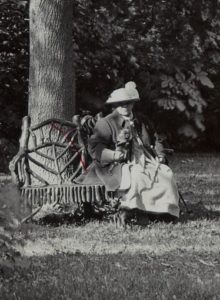
Some of this autocracy is evidenced by her letters to her head gardener at Waddesdon, George Johnson, while she wintered at Grasse. She kept a close eye on the English weather reports, and sent him detailed instructions on all aspects of the gardens, surviving in letters she wrote to him between 1905 and 1921. Her letters demonstrate the breadth of her horticultural expertise, not only as regards the ornamental gardens but also fruit and vegetable production and Waddesdon’s huge range of glasshouses. She also ran the wider estate, introducing new methods of animal husbandry and raising prize-winning stock. Alice threw herself into the war effort: from 1916 floral displays gave way to vegetables, and cut flowers for the house were given up.
She was remembered for her concern for her employees and tenants, following their progress, providing resources in the village, and ensuring their welfare. This redoubtable lady died in Paris in 1922 aged 75, and this summer Waddesdon Manor will be staging an exhibition to commemorate her:
‘Alice’s Wonderlands’ is in The Manor, Coach House Gallery and Eythrope Walled Garden from March 23 until October 30, 2022.
Sources:
Gardens Trust, online lecture: “Forgotten Women Gardeners – Alice “The All-Powerful” de Rothschild by Sophhie Piebenga, 18 January 2022
https://family.rothschildarchive.org/estates/49-eythrope
https://family.rothschildarchive.org/people/58-alice-charlotte-von-rothschild-1847-1922
https://www.parksandgardens.org/places/eythrope
Clare Butler
6
Buckinghamshire’s Forgotten Women in Gardening: Kay Naylor Sanecki (1922 – 2005)
Kay’s 100th birthday would have been in 2022, and interestingly this year marks the 50th Anniversary of The Garden Hisory Journal as well as the Buckinghamshire Garden’s Trust 25th Anniversary and of course the Queen’s Platinum Jubilee. Quite a year!
Sadly, I never met Kay as it was around 2013 that I first came across her whilst researching for my MA dissertation on Maud Grieve. I do however owe much to her as she had carried out a considerable amount of research on Maud, and other herbalists from the 1970s onwards. Her research formed the basis for my dissertation and later my book about ‘Maud’ which I fittingly dedicated to Kay.
I discovered Kay’s archive quite by chance when I contacted Joan Dugdale, a herbalist living in Australia; she had hoped to write a book about Maud but was unable to find sufficient information about her early life. Joan suggested I contact Mick Thompson, the estate manager at Ashridge, as he was the custodian of Kay’s archive. Of course, I already knew of Mick as he was secretary of Bucks Gardens Trust. He had produced copies of Kay’s papers which he gave me, as well as lending me some of Maud’s pamphlets. The rest is history, as they say: I completed my MA and in 2017 published the book about Maud Grieve.
Kay Smith or Kathleen as she was then known was born in Wigan, Lancs. On finishing school, she left home at the age of just 17, and enrolled at Studley College in Warwickshire to study Horticulture. She was there for three years between 1940 and 1943, becoming head girl. She later wrote a history of the establishment. The women-only college was set up in 1898 by Lady Frances, Countess of Warwick in 1902 it moved to Studley Castle. During the war, she also signed up for the Women’s Land Army.
On leaving the college she worked at the RHS at Wisley and in London and she also started to contribute to garden journals and magazines. She was then invited to join Amateur Gardening magazine and continued to freelance whilst bringing up her daughter. Kay had married Waclaw Kasimercz (known as Vance) in 1952 and their only child Diana was born in 1955.
In 1956 she published her first book on herbs, Wild and Garden Herbs. She was editor of the Hardy Plant Society Bulletin for ten years and in the early 1960s the consultant editor on horticulture for Reader’s Digest.
In 1967 she was a founding member of The Garden History Society (later The Gardens Trust), serving as secretary and conference organiser. Finally standing down from the committee in 1979, she was elected a Life Vice-President in 1980 in recognition of her contribution. Kay played a key role in the promotion of Garden History both in the UK and internationally and was instrumental in increasing the society’s membership.
Pamphlet “Medicinal Herbs and their Cultivation” from Kay’s Archive © M. Thompson
During the 1970s she continued to publish and edit, including as assistant editor on the Marshall Cavendish Encyclopaedia of Gardening. She was also commissioned to write numerous affordable little gems for Shire Publications, including Discovering English Gardens, Discovering Herbs, Humphry Repton and Old Garden Tools (probably the most popular title).
From 1970 to 1974 she was the Registrar at Ashridge Management College. Later, in 1982, she returned as the archivist responsible for the estate and family records, a position she held until she retired in 2000. In 1994, she also started the very successful Ashridge Summer Schools, with attendees coming from America and Europe. When Mick Thompson arrived to take on the role of garden manager at Ashridge in 1994 it was the beginning of a great partnership: alongside the ever-enthusiastic Richard Wheeler, Kay ensured that Mick’s ambitious restoration projects came to fruition.
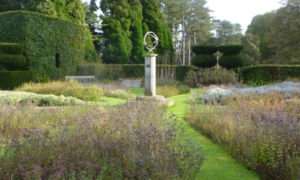
An ornamental herb and flower garden at Ashridge was created in the late nineteenth century probably by the 3rd Earl Brownlow, in memory of his mother, Lady Marian Alford however by the 1980s this had long gone. Plans were put in place to create a new garden in 2005, the beds were laid to a design that Humphry Repton had intended for another part of the garden. The garden is made up of twelve teardrop-shaped beds in a circle which represents the petals of a flower with a central sandstone column and armorial sphere. As Kay had passed away earlier in the year and given her extensive work on herbs, it was seen as fitting that the herb garden at Ashridge should be dedicated to her as well as Lady Marian both significant women that left their mark on Ashridge.
Kay had a wide and varied career, and I cannot begin to list her extensive achievements in publishing, and writing, and the numerous officer positions she held in the horticultural sector. For me, her book the History of the English Herb Garden with its foreword by Anthony Huxley (1992, Ward Lock) was her most successful publication, and in my opinion, her enthusiasm for herbs is only surpassed by that of Maud Grieve herself and perhaps today by the likes of Jekka McVicar.
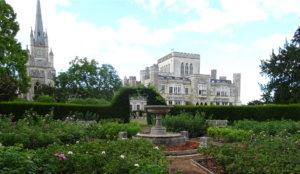
It was only when I started to read Kay’s archive that I realised how difficult research must have been before the internet. She had to type letters to archives and many others and maybe wait weeks for a response, whereas today we expect to get instant feedback online! I am eternally grateful that her legacy provided me with such wonderful material, which I use to spread the word about the importance of medicinal herbs through my publication on ‘Maud’ and my numerous talks to local and national groups.
Reference
The Bucks Gardener Summer 2005 pp 6–7, M. Thompson, R. Wheeler
Many thanks to Mick Thompson for lending me Kay’s archive, and Diana Savil for information on her mother.
Claire de Carle
7
Buckinghamshire’s Forgotten Women in Gardening: Margaret Ursula Mee (1909–1988)
Margaret Mee, a celebrated botanical artist whose exotic paintings of the Brazilian Amazon rainforest flora are exhibited around the world, started life in a modest but happy family among the farms and fields of early 20th-century Chesham. Born Margaret Ursula Brown on 22nd May 1909 in White Hill, a year or so later, the family moved to Lye Green Road, their house there, Rosemead, now a care home called Culwood. She, her two sisters and brother enjoyed a carefree, rural childhood, their early education provided by an aunt living with the family on and off. Ellen (Aunt Nell) worked as a children’s book illustrator, much to Margaret’s admiration. In those times, this was highly unusual for a girl.
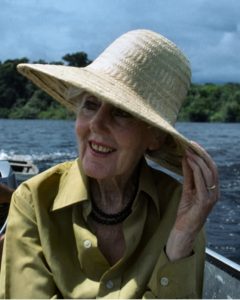
The family idyll was interrupted by the outbreak of WWI. Their father, George, too old to fight, was determined to help however he could and was posted elsewhere to help the domestic war effort. Meanwhile, her mother Lizbelle moved the family to Hove, East Sussex, for the duration where Margaret attended a local school. Her report showed she made good progress in botany and was steadily progressing in art, coming top of the form.
On return to Chesham in 1922, the family settled in Eskdale Avenue and Margaret took up a place at Dr Challoner’s Grammar School. Founded as a boys’ school in Old Amersham in 1624, nearly 300 years earlier, it expanded to new premises in Amersham-on-the-Hill in 1905 and became co-educational. Here, also, Margaret’s talent was noted by art teacher, ‘Benjy’ Buckingham.
A keen amateur naturalist himself, George encouraged Margaret’s early enthusiasm for wildlife. She began tentatively sketching plants but, of course, had no awareness that she would spend the second half of her life producing an extensive archive of botanical artwork which would be exhibited long after her death. Most is at Kew, while many other smaller collections around the world hold samples of her work, including that of the late Prince Philip, Duke of Edinburgh.
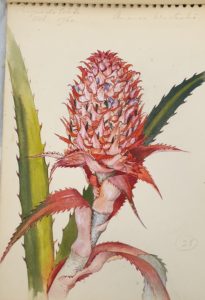
Her early career, however, took her in an entirely different direction. She spent time teaching in Liverpool and married an active trades unionist, Reg Bartlett. She joined the communist party, took part in demonstrations outside Downing Street, and spoke at a TUC Conference, receiving a standing ovation. Consequently, she was offered a job working in the office of Ernest Bevan. However, she turned it down and, what’s more, realising she was unhappy, ended her marriage. Once again, though, life was interrupted by war. Margaret spent WWII deploying her skills in the drawing office of the De Havilland aircraft factory in Hatfield where a permanent position was offered, and similarly refused.
After enrolling in evening art classes at St Martin’s School of Art in London, and meeting second husband Greville Mee there, Margaret realised that art was where her real passions lay. She began a full-time course at Camberwell School of Art tutored by renowned artist Victor Pasmore, part of the Euston Road Group which included members of the Bloomsbury Set including Vanessa Bell.
It was a trip to visit her ailing sister, Catherine, living in Brazil, however, which really changed the course of her life. She and Greville had intended to return to live in the UK eventually, but never did. They would go for long walks to the coast or forest to avoid the heat and noise of São Paulo, and Margaret began to draw the plants she found there. Fifteen plant-hunting expeditions followed during a period of over thirty years, trips which took her further into the rainforest or along the rivers of the Amazon basin.
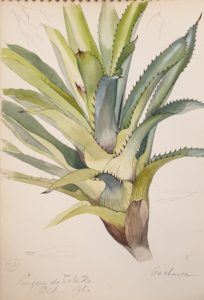
She was intrepid in her quest to find exciting species to draw, facing dangers from wildlife, becoming lost, or being attacked by wary indigenous tribespeople. Developing a particular interest in bromeliads, as well as, to a lesser extent, orchids, she would make quick sketches and bring back specimens to work from, but also paint in the forest from the living plant. The precision of her work, its beauty, and her contributions to conservation had already gained her a reputation among botanists and other scientists.
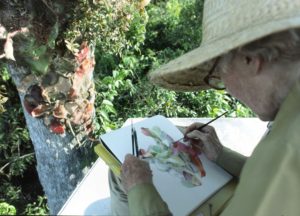
Soon knowledge of her fearlessness, so at odds with her slight, softly well-spoken persona would do the same among the public. Newspaper articles appeared about her, and she was interviewed on Radio 4 and even on TV in America, when she would offer anecdotes describing the challenges she faced. How ironic, then, that her life should end in a car crash on a British road. She had returned for the opening of a major exhibition of her work at Kew, and publication of her expedition diaries. Tragically she died a few weeks later on 30th November 1988, aged 79.
References
Dr Challoners School, Amersham, ‘A History of Our Challoners’
<https://www.challoners.com/c/our-school/history-of-challoners/introduction> [Accessed 12th February 2022]
Morrison, T. (ed.) Margaret Mee: In Search of Flowers of the Amazon Forests (Woodbridge: Nonesuch Expeditions, 1988)
Nonesuch Expeditions ‘Margaret Mee’s Amazon’, <http://www.nonesuchexpeditions.com/margaret-mee/margaret-mees-amazon-contents.htm> [Accessed 12 February 2022]
Seabright, J., Chesham Through Time (Stroud: Amberley Publishing, 2010)
Treadgold, F. R., Challoners 1624–1974 (Privately published, 1974)
Catherine Youd
8
West Wycombe – a Garden of the Dilettanti
The second Sir Francis Dashwood (1708–1771) (left), son of another S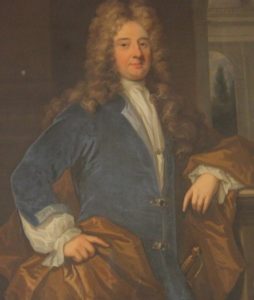 ir Francis (above), inherited West Wycombe at the tender age of 15.
ir Francis (above), inherited West Wycombe at the tender age of 15.
The first Francis had been a successful Turkey merchant – one of the members of the Turkey Merchants Company which became the Company of the Levant. He and his two brothers were importers of silk from the Ottoman Empire, and other goods from Madras via the East India Company. It would not be unfair to suggest that he was a wealth creator par excellence, whilst his son was a spender and bon viveur … par excellence.
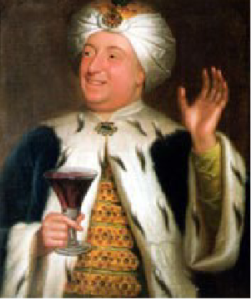 This picture of the second Sir Francis shows him in his costume of the Divan Club which he founded in 1744 – for those who had visited the Ottoman Empire – which of course included Greece. This portrait of ‘Il Faquir Dashwood Pasha’ at West Wycombe is accompanied by three others in Turkish dress – his half-sister Mary Walcot, Sultana Walcotia, Lady Wortley Montagu, and the courtesan Fanny Murray, the dedicatee of John Wilkes banned (and obscene) parody of Pope’s ‘Essay on Man’ entitled ‘An Essay on Woman’.
This picture of the second Sir Francis shows him in his costume of the Divan Club which he founded in 1744 – for those who had visited the Ottoman Empire – which of course included Greece. This portrait of ‘Il Faquir Dashwood Pasha’ at West Wycombe is accompanied by three others in Turkish dress – his half-sister Mary Walcot, Sultana Walcotia, Lady Wortley Montagu, and the courtesan Fanny Murray, the dedicatee of John Wilkes banned (and obscene) parody of Pope’s ‘Essay on Man’ entitled ‘An Essay on Woman’.
This behaviour does not however suggest that the second Francis was not intelligent – quite the opposite. And in this regard he owed a lot to his maternal uncle and guardian, General John Fane, later 7th Earl of Westmorland. Fane had been an officer under the Duke of Marlborough in the wars in the Low Countries and had seen action at Lille and Malplaquet.
It is worth noting that in this context he would have been a fellow officer with Richard Temple, later to become Lord Cobham (left) – the creator of the gardens at Stowe, and became MP for 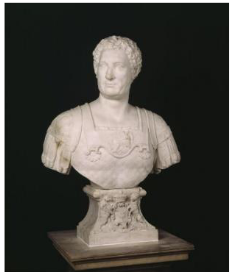 Buckingham in 1727, a seat, unsurprisingly, largely in the gift of Cobham. Fane (right) was a passionate follower of classical and Palladian architecture – and described himself as ‘diligent …in stone and mortar.’
Buckingham in 1727, a seat, unsurprisingly, largely in the gift of Cobham. Fane (right) was a passionate follower of classical and Palladian architecture – and described himself as ‘diligent …in stone and mortar.’
He epitomised this enthusiasm by employing Cole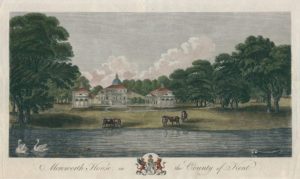 n Campbell to create a replica of Vicenza’s Villa Rotonda at Mereworth in Kent, with Charles Bridgeman designing the gardens, and Francesco Sleter (William Kent’s muralist at Stowe) working as a muralist.
n Campbell to create a replica of Vicenza’s Villa Rotonda at Mereworth in Kent, with Charles Bridgeman designing the gardens, and Francesco Sleter (William Kent’s muralist at Stowe) working as a muralist.
This background set the scene for his influence on the young Sir Francis whom he sent on the Grand Tour in 1726 and then again, on his majority, from 1729 until 1731. During these tours Francis gained a certain notoriety for laddish behaviour – backward hopping races in the Long Gallery of the Uffizi and producing a horse-whip during the Ceremony of Scourging in the Sistine Chapel on Good Friday, where he ‘…flogged right and left quite down the chapel, and made his escape, the congregation exclaiming, ‘il diavolo, il diavolo! and thinking the evil one was upon them with a vengeance…’.
This behaviour was matched by his erudition gained from his Uncle Fane leading to an equal enthusiasm for the architecture of the Greeks and the Romans. His foundation, with others, of the Society of Dilettanti fulfilled both these, perhaps nowadays conflicting, objectives. Walpole acidly remarked that it was ‘…a club for which the nominal qualification is having been in Italy, and the real one, being drunk: the two chiefs are Lord Middlesex and Sir Francis Dashwood, who were seldom sober the whole time they were in Italy…’
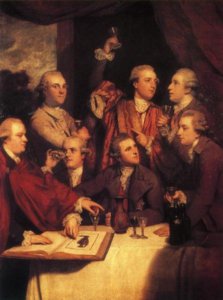 This remark was probably true, but still grossly unfair. The Dilettanti were instrumental in organising and funding the works of architectural discovery amongst the ruins of the ancient world by the architects, James Stuart and Nicholas Revett, published as ‘Antiquities of Athens’ and ‘Antiquities of Ionia’. Both are still the bibles of Grecian architecture.
This remark was probably true, but still grossly unfair. The Dilettanti were instrumental in organising and funding the works of architectural discovery amongst the ruins of the ancient world by the architects, James Stuart and Nicholas Revett, published as ‘Antiquities of Athens’ and ‘Antiquities of Ionia’. Both are still the bibles of Grecian architecture.
And Sir Francis with another Dilettanti founder, Thomas Anson of Shugborough, used these two architectural draftsmen to embellish their gardens – Stuart at Shugborough, and Revett at West Wycombe.
Thomas Pennant in his ‘Journey to Chester’ describes Shugborough: ‘…it is more difficult to enumerate the works of art dispersed over this Elysium… the lively improved front of Shugborough… the genuine architecture of China, in all its extravagance; the dawning of the Grecian, in the mixed Gothic gateway at Tixall; and the chaste buildings of Athens, exemplified by Mr Stuart, in the counterparts of the Choragic Monument of Lysicrates’, and the Octagon Tower of Andronicus Cyrrhestes. From the same hand [Stuart] arose, by command of a grateful brother , the Arch of Adrian of Athens, embellished with Naval trophies, in honour of Lord Anson, a glory to the British fleet ; and who still survives in the gallant train of officers who remember and emulate his actions…’ 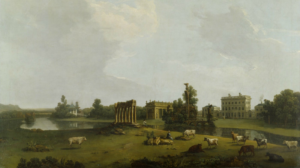
The painting of Shugborough’s West Front by Nicholas Dall in c1768 show the Chinese House, the remains of a classical colonnade, and the Gothicky ruins of the Bishop of Lichfield’s Palace.
Conversely, at West Wycombe Francis Dashwood employed Nicholas Revett to design garden buildings for his newly reordered gardens and park. And Revett’s commission seems to have been to produce a parody of the heavy-handed humour in the gardens of Lord Cobham and his nephew, Earl Temple, at Stowe. So each of his buildings at West Wycombe has its origins in the pompously elegant temples (or Temples?) at Stowe.
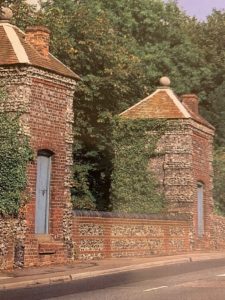 So rather than a Palladian Bridge which took the visitor both dry under the rain and dry over the Stowe River, Revett produced a Pepperboxes Bridge over the diminutive River Wye, with a sentry box at each end to shelter from the rain.
So rather than a Palladian Bridge which took the visitor both dry under the rain and dry over the Stowe River, Revett produced a Pepperboxes Bridge over the diminutive River Wye, with a sentry box at each end to shelter from the rain.
And then to repeat the Gothicism at Stowe with its Keeper’s Lodge (later the Bourbon Tower), mock castle hiding a farmhouse (rather obviously known as Stowe Castle), and Gothic Temple, Revett produced a triptych of Gothic buildings in response.
First is a castellated farmhouse, rather delightfully doing duty as Don Quixote’s Castle, reminding us of the Don’s mistaking the local bawdy tavern as a Castle filled with grand ladies in need of rescue? The results of the mistake can only be imagined… And one wonders whether Revett misread his instructions, for the gamekeeper’s lodge (or Bourbon Tower) was replicated at West Wycombe with the Round Lodge or Gatekeeper’s Lodge on the back entrance drive.
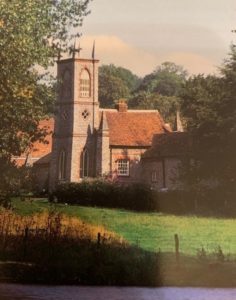 Thirdly, as a mock (or mocking) re-imagination of the Gothic Temple at Stowe, a diminutive little church and steeple dedicated to St Crispin, the patron saint of shoemakers – ‘for the cure of souls’… actually a joke by William Shakespeare by William Shakespeare but recycled here at West Wycombe.
Thirdly, as a mock (or mocking) re-imagination of the Gothic Temple at Stowe, a diminutive little church and steeple dedicated to St Crispin, the patron saint of shoemakers – ‘for the cure of souls’… actually a joke by William Shakespeare by William Shakespeare but recycled here at West Wycombe.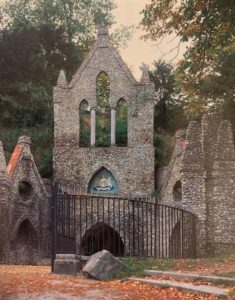
And still in ecclesiastical mode, a ruined Abbey on the side of the hill above the park and immediately below the church of St Lawrence on the top.
Perhaps invoking the idea of hell for the monks of the abbey below and heaven for the congregation above, it is a nice juxtaposition for Francis’s Monks of Medmenham or Hell Fire Club in their hellish grotto, with his enthusiasm for rewriting the Book of Common Prayer for the communicants above – ‘pious and devout persons whose age or infirmities will not suffer them to remain for hours in a cold church, more especially in the Winter season…’. In antithesis to the catholic ‘hocus pocus’ parodied in their celebrations in the cave beneath – or at Medmenham Abbey, the service was free from ‘all remnants of Catholicism.’
Stowe’s little roothouse, Augustine’s Cave, despite its obscene Latin doggerel could not compete with the earthy erudition of Sir Francis.
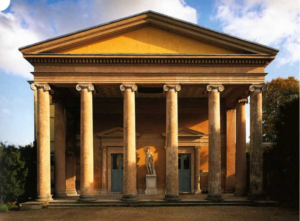
Finally, on West Wycombe house itself, Dashwood brought together ideas of his uncle and his best reconstruction of a classical building.
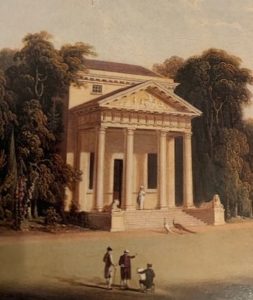
The East Portico is a replica of one of the faces of the Villa Rotunda, just like his Uncle Fane’s masterpiece at Mereworth, and the West Portico a reworking by Nicholas Revett of the Temple of Bacchus at Teos.
What a place and what a man…
Richard Wheeler
| 9 |
Henry Lane & Son of Berkhamsted (1798-1945)
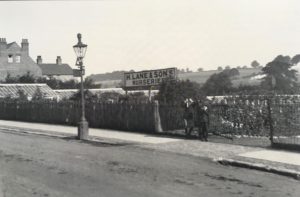
Henry Lane & Son of Berkhamsted is a largely forgotten, influential nursery. I came across Lane’s nursery in late 2019. A one-line entry in a Penn Estate account book of 1920 showed a significant purchase of rhododendrons from the firm to decorate the gateway to a new drive. It piqued my interest, especially as I have an old ‘Lane’s Prince Albert’ apple in my garden and wondered whether it was the same Lane, but I put the thought to one side. Just over a year later my study of a 20th century subject had been frustrated by the closing of galleries, their archives and the difficulties accessing more modern texts through free online resources. I had to rethink, and H. Lane & Son came back to the fore – any excuse to visit a nursery!
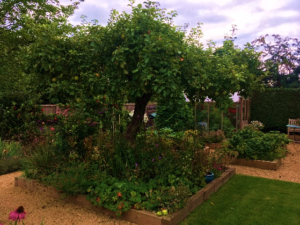
Local histories revealed that the company had been of great local importance both economically and socially. An uncorroborated start date of 1777 with unbroken direct family management until 1945 immediately spoke to me of clarity, focus and drive; many 19th-century nurserymen were unable to negotiate the tricky world of borrowing, growth and adaptability as land use, competition and prices rapidly rose, not to mention the demands of fashion.
Next stop the archives at Hertford. Would there be a business archive? A selection of material relating to John Edward Lane’s (the son) estate at his death in 1889 was disappointingly small but did reveal the extent of the Lane empire and trade connections at that date. He had a brewery business and a pub chain as well as a list of over 100 nursery trade contacts across Britain and Europe. However not a single account book, diary or letter surfaced. A general search via TNA Discovery at Kew only revealed one late-19th century garden plan, held at Bedfordshire Archives.
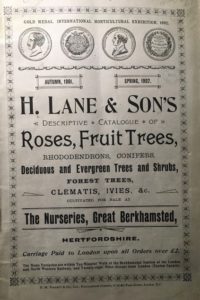
The RHS Lindley Library revealed about twenty nursery catalogues from 1845 to 1934, which were to be invaluable; one of 1866 revealed the company’s start date of 1798.
Henry (c.1781–1865) was born in Uxbridge and apart from his baptismal record and marriage record of 1807, there are very few other records. He was renting ¼ acre of ground in Berkhamsted in 1810 and adverts for John Lane (1808–1889), a seedsman, appear in Pigot’s Directories of the mid-1820s. However, by the end of this decade things had progressed. Henry Lane & Son were succeeding at horticultural shows, their customer base had extended to the Countess Brownlow at Ashridge, who bought large quantities of their (unspecified) seeds for both the flower garden and the vegetable garden in 1830, and they were increasing their land holdings.
By 1839 they were occupying 16 acres of land and running out of space in the centre of Berkhamsted. Just two miles away across Berkhamsted Common they found Martins Farm which enabled them to move to large-scale production. The census of 1851 revealed that Lane was employing 33 people and occupying 40 acres of ground. How had the Lanes achieved this success? The Victorian horticultural and local press provided the answer. Thank goodness for the online resources of the HathiTrust, Biodiversity Heritage Library, and the British Newspaper Archive.
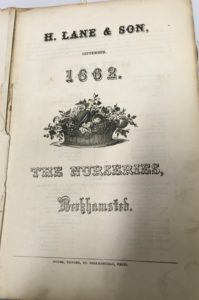
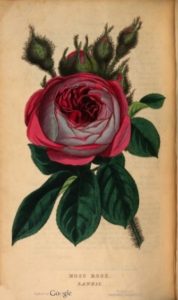
The mid-19th-century catalogues revealed that they were selling a wide range of plants but had started to build a reputation with fuchsias, pansies, dahlias and calceolarias. John was quick to recognise that fashion and the interests of the Horticultural Society would be his platform to success. Henry enjoyed the creativity of crossing and raising new varieties of rose, but it was the large-scale growing of high-quality roses bred by others both in pots and in the ground that brought distinction to the Berkhamsted Nurseries: Lane was the first in 1831 to exhibit roses grown in pots, to the surprise of many others at the Horticultural Society. Samuel Reynolds Hole, a respected rosarian, described Lane as being one of the four most distinguished chiefs of rose growing in the mid-century along with Thomas Rivers, Adam Paul and William Wood.
As the fashion for North American trees and shrubs grew, Lane’s extended their skills to the tender azaleas and greenhouse rhododendrons (considered separately at that time). Their skills with standard roses which exemplified John Claudius Loudon’s Gardenesque style perfectly transferred to hardy rhododendrons and laurels to decorate the fashionable lawns and borders around the house, small or large. Fruits were not forgotten, grapes and orchard fruits in pots being highly profitable for them. Hundreds of medals rewarded their efforts throughout the century and into the 20th. Their nursery was not only reported on by all the principal British journals but also in European and American ones.
Their success with dessert grapes grown under glass brought them the highest accolade in 1875 at the International Exhibition of Fruit in Ghent. Lane’s grapes were unanimously judged to be so exceptional that that they were awarded a solid gold medal instead of the usual gold-plated one, much to the astonishment of the miffed Northern Europeans who had such a strong tradition of grape growing under glass. By this time H. Lane & Son’s nurseries covered 150 acres across three sites with 100 full-time employees.
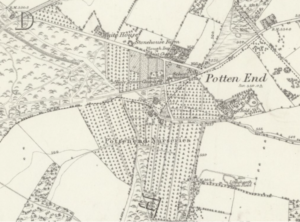
Customer information is thin on the ground. It must surely have been the wealth of the rapidly expanding upper–middle classes which powered Lane’s commercial success. Only two such customers have been discovered in 1852, both from the Midlands, through their correspondence with The Gardeners’ Chronicle (1852) and The Floral World (1860). Supplier names are very rarely given in archive record descriptions, and the limits imposed on in-house archive research continue to frustrate. Apart from the previously mentioned Brownlow and Howe, only three other customers have surfaced: Delmé-Radcliffe at Hitchin Priory in the 1840s, Valpy at Champneys in the late 1890s, and Halsey at Great Gaddesden in the early 1900s. The location of the nursery so close to the Bucks border must surely have meant that many of their customers came from Buckinghamshire. Even in the earliest days of the nursery an important stagecoach route through Berkhamsted linked London to Aylesbury and beyond to Buckingham and the Midlands. If you ever come across a relevant invoice or account book entry in your garden research, please do let me know.
Why has their influence been forgotten? Their hardy trees and shrubs, especially rhododendrons, kalmias, conifers and ever-present fruit trees, were equally admired by the leading figures such as James Shirley Hibberd, William Robinson and Archibald Barron. John and one of his sons, Frederick Quincey (1841–1907), were on the RHS Fruit committees; John was a leading pomologist, becoming vice-president of the Fruit Committee, working at the same level as Rivers and Paul and in the vanguard of developing consistently high-quality new plants for sale. Unlike Rivers, Paul and Veitch, though, they promoted their business and their plants but not themselves. They did not write books or articles for magazines and spent much of their spare time (what spare time?) supporting Berkhamsted’s development and population through charitable works and infrastructure improvements. The tragic loss of five sons at an early age across two generations must have been devastating personally and also commercially. One of John’s sons, John Edward (of course), was already recognised as an exceptional horticulturalist at the time of his death. The adaptability and vision that they had in the years up to 1907 and the death of Fred Quincey (what better name for a fruit specialist?) did not appear in the 4th generation and the firm struggled on until the end of the WWII, when it was sold and disappeared by 1960.
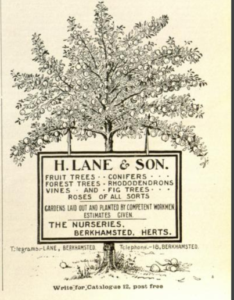
There is so much more I could tell you. Apart from the apple, which was indeed ‘my apple’, only the moss rose ‘Laneii’ (imported from Laffay in 1846) is still available today, as is a golden cypress, Chamaecyparis lawsoniana ‘Lanei Aurea’ of their own raising, a highly rated conifer growing in Adrian Bloom’s garden at Foggy Bottom. Other apples, rhododendrons, fuchsias, pansies and cinerarias raised by them have disappeared from cultivation. The nursery grounds have also disappeared. The large trees, rhododendrons, and some fruit trees growing around Berkhamsted and Potten End in private gardens, open spaces and along roadsides continue the legacy of these ambitious and hard-working nurserymen, whom The Florist called ‘ardent lovers of good gardening’, and Shirley Hibberd likened to ‘nurserymen princes’ because of the scope and influence of their operation.Perhaps a forgotten nursery in Buckinghamshire could be brought back to life through a combination of archive and online research. Charles Turner of Slough is one that comes to mind as I have found little written about them.
Louise Kell
10
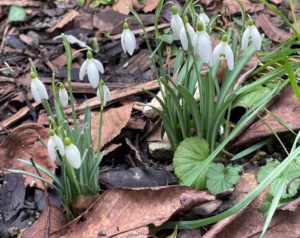
Get Walking
Wrap up warm, walking boots on and off for a spring walk in the beautiful Chilterns, my backyard!
Whiteleaf Cross
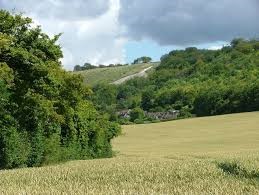
Enjoy a walk up to Whiteleaf to see glorious views of Buckinghamshire and the chalk-hill cross that Whiteleaf is known for. You can see to Wittenham Clumps and across the Aylesbury plain. There is a worthwhile climb up from the pub car park or you can take a slightly easier route to reach the viewing point, which can be found by starting at the Whiteleaf car park. Finish your walk at the Plough at Cadsden or The Red Lion on the Icknield Way. Take a look at the map and walking guides to find out the different routes you can take and explore.
Coombe Hill and Chequers Trail
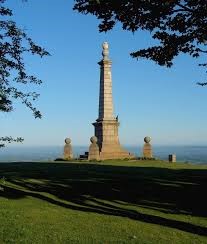
This is a great walk for families which takes you through vast chalk grassland, beautiful woodland and the pretty hamlet of Butlers Cross with the pub The Russell Arms, owned by the locals. The Coombe Hill and Chequers Trail circular route will take you to the Boer War memorial which is a perfect stop for a picnic (weather permitting) and views overlooking the Chilterns.
Penn Wood
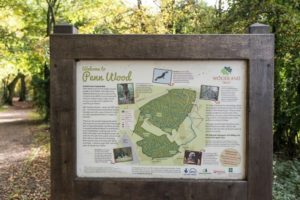
Penn Wood is one of the largest ancient woodlands in the Chilterns. Part of Penn Wood is managed by a herd of cows on the ‘wood pasture’. There are red kites and buzzards overhead and in Spring a beautiful carpet of bluebells. There are woodland walks suitable for all ages and abilities with a choice of different routes for either a gentle stroll or something a little more challenging.
12
News and Snippets
Buckinghamshire Gardens Trust Events
With this newsletter members will have received a programme of events to celebrate the 25th Anniversary plus the Spring lectures, a mixture of in-person and Zoom talks.
Spring Lectures
Sunday 20th March 2.30pm via Zoom. Sarah Gray has invited Trust members and guests to follow her on her visit to the gardens and estates of the Borromeo family on Lake Maggiore.
Postponed to Autumn programme: Thursday 7th April 18.30pm St Mary’s Church Aylesbury. ‘In search of Artist’s Gardens’, in-person talk by Claire de Carle.
Thursday 21st April 18.30pm St Mary’s Church, Aylesbury. Film ‘Turn End’ and conversation with Jackie Hunt.
Saturday 28th May 2.30pm St Mary’s Church, Aylesbury. ‘Forgotten Women Gardeners: Alice de Rothschild’, in-person talk by Dr Sophieke Piebenga.
25th Anniversary Events:
Claire de Carle and her 25th Anniversary team have put together a very exciting timetable. It includes a series of walks, visits to ‘Unforgettable Gardens’ and a celebration at one of Buckinghamshire’s outstanding properties, Hampden House.
The Trust’s new booking system enables you to book and pay online. It also reminds you just before the event that you have booked tickets! Bookings can be made through: www.ticketsource.co.uk/buckinghamshire-gardens-trust
You can book all your events with a ‘shopping basket’ and then pay online by card. If you are having problems then email enquiries@bucksgardenstrust.org.uk
Major Contribution to National Heritage List
The Gardens Trust and Historic England have sent congratulations to the Research & Recording Team and Clare Butler, the Bucks Gardens Trust’s ‘Enriching Wizard’, for adding an amazing amount of information to the National Heritage List via ‘Enriching the List’.
The Research and Recording Project has reached a milestone with 100 research dossiers now completed. Clare ensures that the National Heritage List is kept updated with links to these dossiers; 306 individual Heritage List entries have so far been linked since 2018.
Welcome to New Members
The Buckinghamshire Gardens Trust is delighted to welcome the following new members: Ann Davidson, Morwenna Breen-Hayes, Clare Esson, John & Wendy Curtis and Rachel Prior.
Membership
In the face of rising costs and of subscriptions at 1997 levels, Bucks Gardens Trust Council have agreed an increase for 2022/2023 which comes into effect on 1st April. A reminder of the new subscription rates:
Individual £20
Joint/Family £30
Single Life £300
Joint Life £450
Schools/Societies £25
Still remarkably good value! Many thanks to those who have already paid for next year or who have altered their standing orders/direct debits to the new amounts. Our Chair and I will be writing to you all to clarify the changes. And welcome to our recently joined members; I hope to meet you all as we open up talks and walks later in the year.
Sarah Gray, Membership Secretary
The Gardens Trust
As a county member of the Bucks Gardens Trust you are affiliated to The Gardens Trust and can book on to any of their lectures and courses. http://thegardenstrust.org./events-archive/page/2/
There is a very large range of Zoom lectures available from March to July and some are free.
Bucks GT Contacts
enquiries@bucksgardenstrust.org.uk Rosemary Jury
membership@bucksgardenstrust.org.uk Sarah Gray
research@bucksgardenstrust.org.uk Claire de Carle
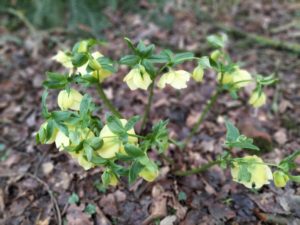
Copy dates for 2022
Summer – 14th May for online publication 30th May
Autumn – 13th August for publication 29th August
Christmas – 12th November for online publication or maybe a special Christmas publication 1st December
Gwen Miles – Editor Clare Butler – Vice Editor
13

